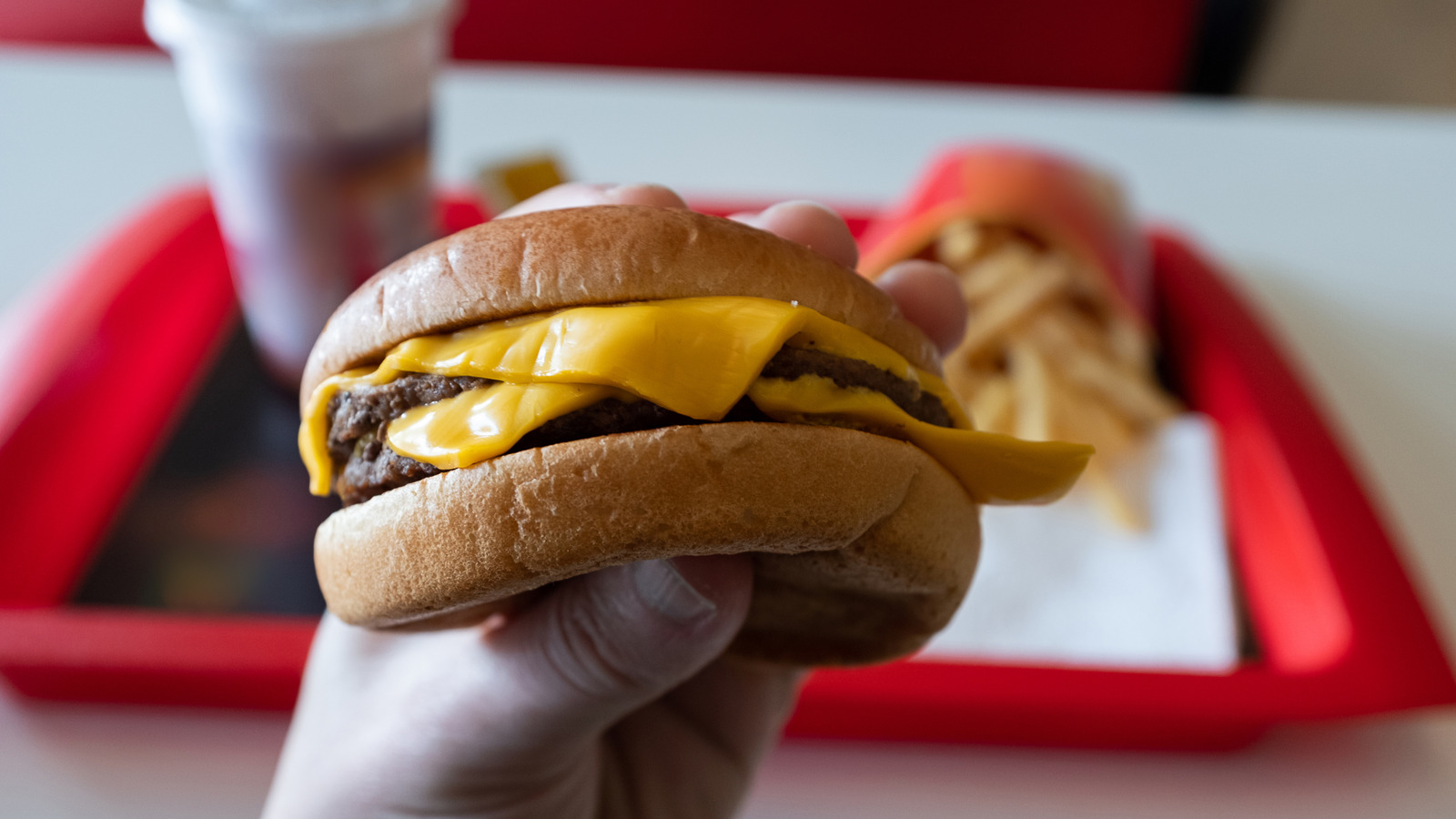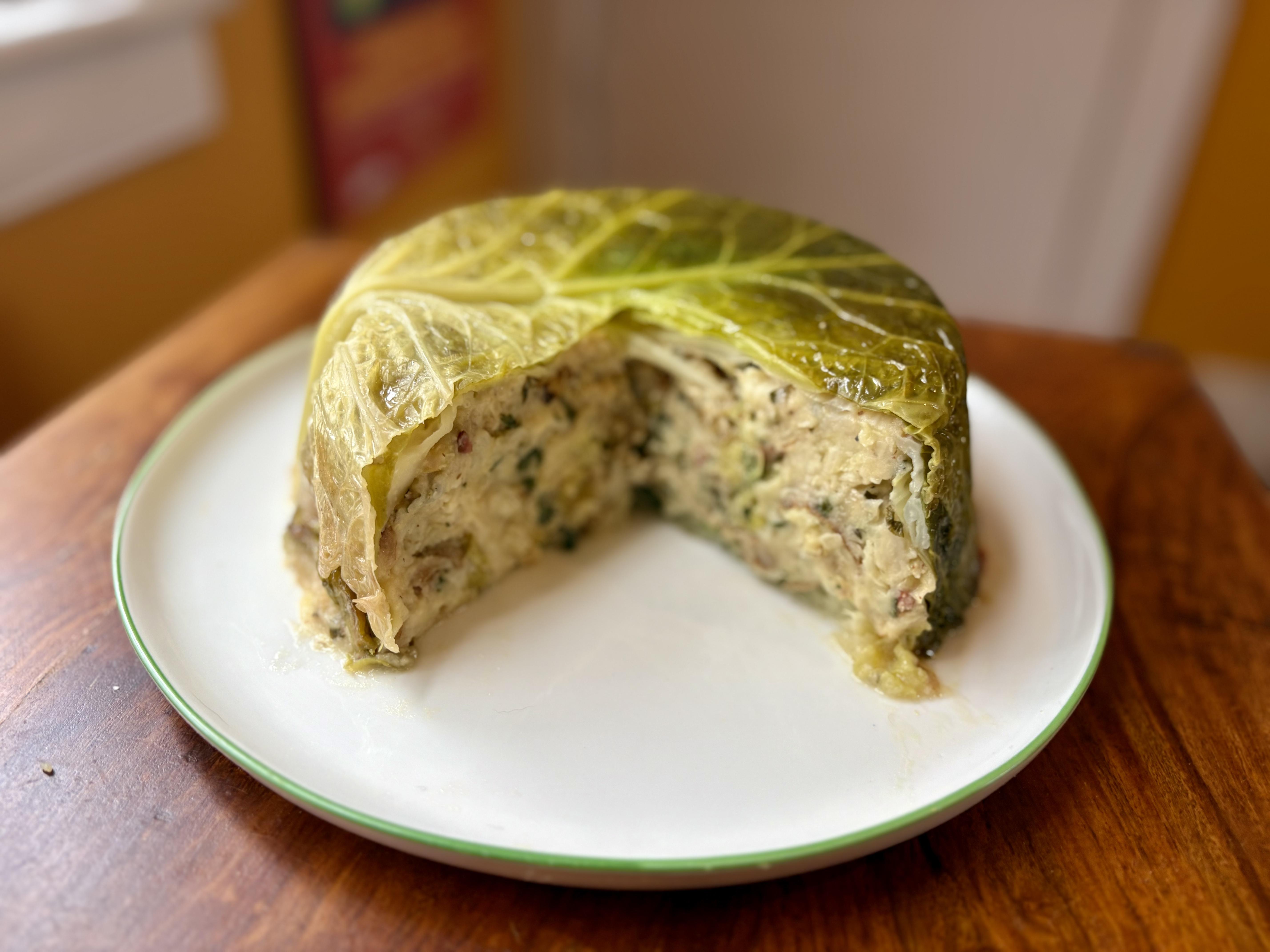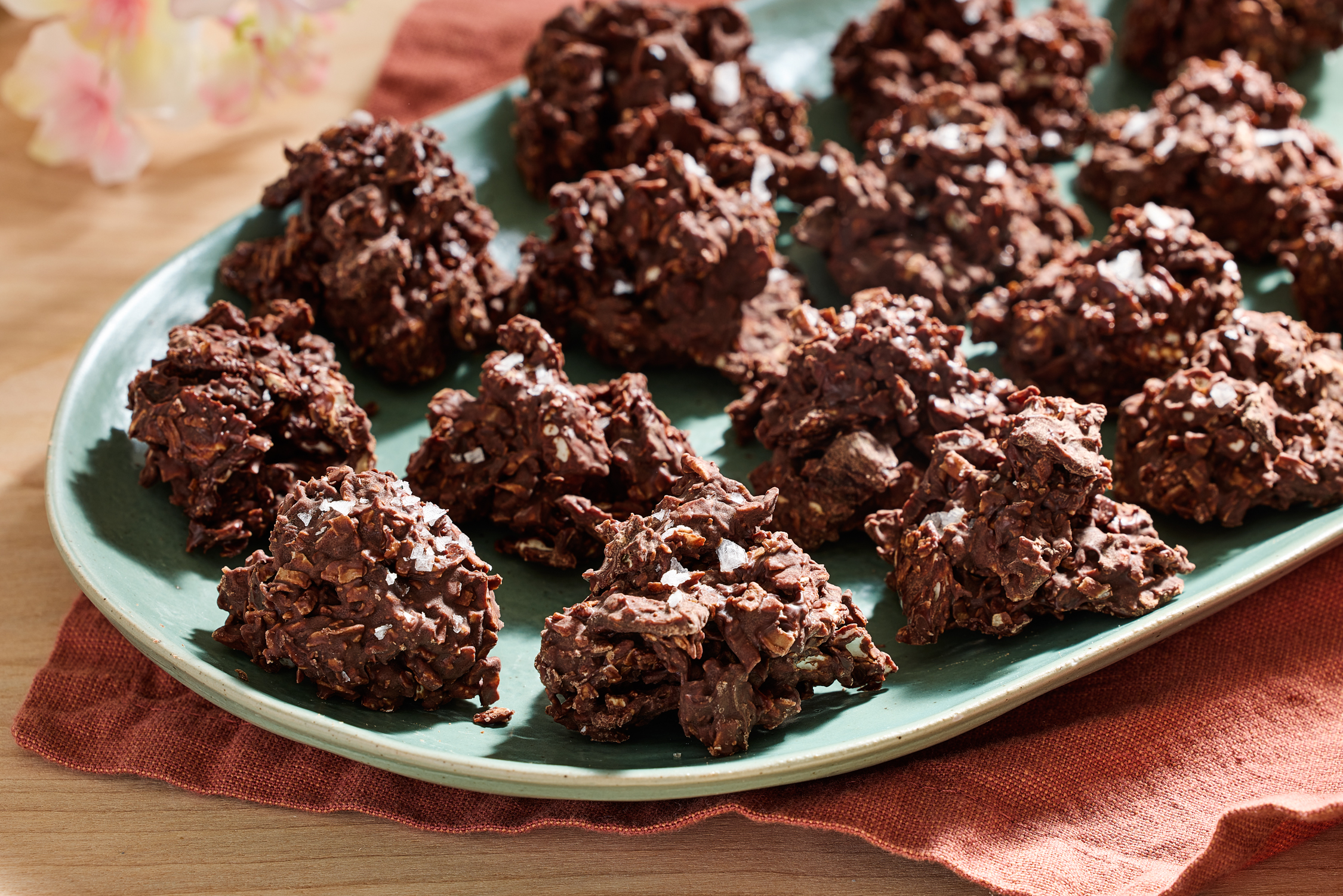What don't you know about burgers? As it turns out, quite a lot — and maybe you're believing some serious mistruths about them along the way. Burgers are everywhere you turn, and it's not hard to get a good one for a reasonable price. The problem is that you might be being deceived by your burger, and even if you're eating a patty and bun from one of the best burger chains in the USA , you may be buying into certain myths about them that we really need to put a stop to.
A lot of burger myths revolve around how they're cooked. In the hunt for a perfect burger, countless false facts about how to form your patty, when to season it, and how much you should be flipping them have festered and spread throughout the culinary community. There are also some key myths around how to eat a burger, which we're willing to bet you believe in.

Plus, it's not just those homemade patties that are subject to myths and false beliefs. Fast food and commercially-made plant-based burgers are plagued by their own myths that people buy into time and time again, which harm consumer trust and may be causing you to make slightly unhealthy choices. 1.
False: Burgers started life in the United States Where do you think your burger comes from? The USA, right? We can understand why you think this: After all, this all-American food is the staple of virtually every barbecue, tailgate, and cookout across the country, as well as most restaurants. However, we're here to dispel the idea that burgers are American — and while they may have achieved their modern form in the United States, they actually have a long, international history, which started in 13th-century Mongolia. Burger historian George Motz explained that you can trace burgers back to the eating habits of Tatar fighters in the region.
"Apparently, the Tatars had a taste for raw mutton," he said to CNN . "They would ride all day long with raw mutton under their saddles. When they finally set up camp, they would take this raw, warm mutton, chop it up, probably add some spices or something, and eat it that way.
" We've gotta be honest, that sounds gross, but we can see how this meal then turned into the hamburgers made in (you guessed it, people) Hamburg, where they became spicy meat patties known as frikadellen. When frikadellen made it to the United States, they began being known as "Hamburg steaks," and eventually started being served between slices of bread. Thus, the burger became what we know and love today.
2. False: A good burger has to have an 80/20 meat ratio When it comes to burgers, the conversation about meat ratios never ends. The traditional wisdom goes that you need just the right split of meat to fat in a beef burger for the best taste, and for most people, that split is 80% meat, 20% fat.
Burger purists will be very quick to tell you that this split gives you the best balance of meatiness to fattiness, and keeps your burger juicy and tasty. Now, it might definitely be true that an 80/20 ratio can produce a great burger — but it's far from the only one you can go with, and the right ratio for you will absolutely depend on your personal preference and how you like your burger cooked. For instance, while an 80/20 split might be good for medium-rare burgers, a 70/30 ratio will be much better for medium-well burgers that need more moisture when they're cooked.
If you prefer a well-done burger, going for 60/40 will likely be the best fit, as they'll give you more juice and tenderness. If you want a lean burger, you can go for a 90/10 split, although you might find that this makes things a bit dry. 3.
False: Burgers are always unhealthy Of all the burger myths out there, we've gotta say that we think this one is the most unfortunate — and probably the most pervasive. Look, we get it: A big hunk of fatty meat in some bread doesn't exactly sound too wholesome. When you consider that a lot of people then top it with bacon and cheese and then slather it in mayo and various sugary sauces, it's hard to make the argument that a fully topped burger is good for you.
However, a burger is what you make it, folks. It's entirely possible to make burgers healthy, by using a low-fat meat blend and keeping your toppings to a minimum. If you veer away from using loads of cheese or other types of meat, and instead focus on loading your burger with slices of tomato, onion, and lettuce, then you can keep things pretty nutritious.
You can use a whole wheat bun, too, to increase your fiber and nutrient intake, and if you're concerned about your red meat intake you can swap out the beef for chicken or turkey. In its basic form, a burger is just a hot sandwich, and no-one's out here saying that sandwiches are the unhealthiest thing in the world, right? 4. False: Bigger is always better The quintessential image of a burger — a towering stack of meat and bread, with a huge, juicy beef patty in the center — is often believed to be the best style of the sandwich you can make.
We live in a world where we're led to believe that bigger usually means better, and as a result, small, modest burgers with thinner patties are often assumed to be inferior, with the meat ending up drier and less satisfying. However, that's not the case. When made correctly, smaller burgers with thinner patties can be way more manageable, and the meat itself is less overwhelming and dominant.
As a result, the interplay of flavors between the beef, toppings, sauce and bread is way more balanced. Thinner burgers can also have a better overall texture than bigger ones. With big, fat burger patties, a lot of the meat will be soft, chewy, and somewhat tacky, as it has less contact with your grill or stovetop.
Conversely, slimmer styles like smash burgers emphasize getting as much meat on the hot surface as possible, which then creates more crispiness. This also boosts and develops the meat's flavor. If you're a big fan of meaty burgers, though, you don't have to settle for one or the other.
Just cook two or three thinner patties and stack 'em up. Hey, if it's good enough for McDonald's, it's good enough for us. 5.
False: Burgers always need a binder Have you ever tried making a burger without a binder? Probably not, right? We'd guess that the reason that you haven't is because you've likely been told that your burger will be way too loose and fall apart. Eggs, breadcrumbs, and cornstarch are commonly used to keep the burger meat from cracking and separating, and they can also help to plump up burgers and make them seem juicier. So why would you bother trying to make burgers without them? Because you don't need them, that's why.
It's entirely possible to make a burger with just meat and seasonings: The key is getting the fat content and grind size right. If you're using a 80/20 or 70/30 blend, your meat should remain tacky enough to adhere together without using any other ingredients. Opting for a coarse grind, meanwhile, will prevent your meat from breaking down too much when you mix it together and form your patties, which can lead to gummy, dense burgers which can be more likely to crack in half.
You might find that grinding meat at home or having it ground at a butcher's gives you a better result than store-bought ground beef. 6. False: Fast food burgers are lower-quality or have more fillers than homemade ones Okay, so here's one that needs a little explaining.
We're absolutely not under the illusion that fast food burgers are superior to homemade or restaurant-made ones. Fast food burgers are mass-made constructions which sacrifice individuality for convenience, and which can often be texturally pretty poor, due to sitting under heat lamps for minutes on end. They can also be overly salty, or else have a fairly flat, anonymous flavor that has no love in it.
Now, all of those things may be true, but what's also true is that these burgers are often pretty good quality. Perhaps because of how much scrutiny they face, many of the biggest fast food restaurants like McDonald's and Burger King use only 100% beef in their burgers, which is USDA inspected and lacking in any fillers, preservatives, or additives. How they then treat and cook those burgers is another question entirely, and it may well be true that fast food joints then overmix their burgers or scorch any moisture out of them.
When it comes to the sheer quality of the beef, though, they're not as bad as you think. 7. False: If you want the best burger, you need to grill it Burgers are one of the ultimate grilled foods, and it can feel like sacrilege to cook them any other way.
When you grill a burger, after all, you can give it a perfect sear on the outside while retaining its juiciness within. You also get access to those delightful grill marks, which deepen the flavor of your burger via increased caramelization. However, grilling isn't the only way you can cook your burger — and in fact, using a grill can be limiting.
Trying to make a smash burger on a grill will cause you to mash your meat through the cooking grate, whereas cooking on a griddle will still give you the high heat you need and a flat surface area to work with. If you want a fuss-free burger technique , you can also cook your patties in the oven, which browns them slowly but more comprehensively. By using a wire baking rack when cooking them , you'll make sure they cook evenly, too.
It's also worth remembering that charring your burger to oblivion may give it a bold flavor, but it may not be the healthiest approach. "Cooking meat at high temperatures creates carcinogens that may cause changes to DNA that increase the risk of cancer," explains Carolyn Lammersfeld, vice president of integrative medicine at City of Hope Atlanta, Chicago, and Phoenix. Going low and slow in the oven may be a better option.
8. False: Burgers should be cooked at room temperature Common knowledge dictates that you should always cook meat from room temperature. There's a very good reason for this: When you cook meat straight from the fridge, the muscle tissue gets tighter and the heat from your pan or grill doesn't move through it as easily.
This results in an uneven overall cook, as the outside of your meat singes and the inside remains raw. Interestingly, though, when it comes to burgers, you should do the exact opposite and grill them straight from the fridge . Burgers differ from whole cuts of meat because the contraction that cold temperatures creates is something you want here, as it helps to keep your burger patties well-formed.
As they get warmer, burger patties begin to get looser and fall apart, creating problems when they're on the grill. Additionally, keeping your burgers cold stops the fat inside them from loosening or melting, which helps them remain moist and tender when they cook. Cooking burgers from cold also helps keep them raw on the inside while generating a caramelized crust, and because they're already ground up you don't need to worry so much about them being too dense.
9. False: You should always season your meat before forming your burgers What's life without a little seasoning? A pretty boring one, we'd say. So it's no surprise that burgers need to be seasoned just like any other food.
However, one long standing myth about burger seasonings is that they should be mixed right into the meat itself, so that every bite is as flavorful as the last. While this is something you definitely can do, you should be prepared for any seasonings you mix in to change the structure of the meat itself — and potentially ruin your burger. The problem is that adding seasoning blends which include salt (or just salt on its own) to your meat will cause the proteins in it to break down.
This leads to a tighter, tougher texture that's slightly more like a sausage than a burger. While that may be attractive to some, it somewhat robs your burger of that rough, slightly loose texture that's such a big part of the appeal. Instead, we'd recommend avoiding seasoning your burgers until just before you're ready to cook them.
Keep things simple, too — a little salt and pepper should be enough to bring your beef's taste to life. 10. False: A burger should always be medium-rare Ask any meat connoisseur out there how they like their burgers to be cooked, and most of them will probably say the same thing: Medium-rare.
The thought process goes that medium-rare is ideal for burgers, as it gives you just the right balance of a browned, caramelized exterior and a juicy interior. Cook your burger too much, and you'll end up with something dry and tough; don't cook it enough, and your burger will be too cold on the inside and lacking in any depth of flavor. Now, we get why people buy into this logic, but we're here to tell you that it's grade-A nonsense.
It's entirely possible for well-done burgers to be just as good as medium-rare ones. The key is to use ground beef with a high enough fat content. This will keep your burgers moist and flavorful even when they're cooked through to the middle.
It's also important to point out that medium-rare burgers may be the norm, but they're also riskier to eat than well-done ones. The less your burger is cooked, the more likely it will be to be harboring potentially harmful bacteria. Ground meat should be cooked to a minimum internal temperature 160 degrees Fahrenheit to be totally safe, and at this heat they'll be cooked through to the center.
11. False: You should only flip your burger once One of the biggest longstanding myths about burgers is about how you cook them. Ask any self-appointed grill expert, and they'll tell you that you should only flip your burger once when you're cooking it.
The idea is that if you flip it too many times, you won't develop enough caramelization on the outside of your meat, and it'll also cook unevenly. We're just gonna bust this one right now: Neither of those things are strictly true. Multiple experts have noted that flipping your burgers regularly will actually help them cook better.
If you only flip your burgers once, it's very easy to end up overcooking them on one side and undercooking them on the other. This means that the flavor concentration in your burger is all off, with one side being way more developed. Conversely, flipping your burgers in regular intervals will keep both sides of the meat cooking at the same rate, giving you a more evenly-pink center.
Plus, while your caramelization may not be quite as deep, if your grill or griddle is hot enough you'll still get a perfectly adequate browning on the outside. 12. False: You should always eat your burger the right side up A burger arrives at your table crowned with a bulging top bun, and supported on the underside by the other half, a flat cushion that stops the meat from dripping onto the plate.
Now, it makes sense that you'd then pick the whole thing up, and eat it as it is, right? After all, it's presented to you like that — so why would you think to consume it any other way? We're here to blow your minds, people: You've been eating your burgers the wrong way around . By flipping your burger, you're optimizing its physical structure and making it way more enjoyable. Most of the time, the top bun is thicker than the bottom one, and this means that it's better-suited for absorbing all of the juices your burger releases without making things too soggy.
Additionally, your teeth won't have to sink through a big hunk of bread to get to your meat: They'll hit the patty way more quickly, giving you quicker access to the taste. We've gotta say, though, that there's no one way to eat your burger — if you prefer to eat it the right way up, go for it. 13.
False: Plant-based burgers are healthier for you It seems like every day, someone else in our lives has adopted a plant-based diet. Hey, don't get us wrong: We're huge supporters of folks reducing their meat intake, either for dietary, environmental, or economic reasons, especially given the wealth of amazing plant-based foods out there. However, one common myth that people buy into is that all plant-based foods are healthier — and when it comes to burgers, that's just not quite the case.
Plant-based burgers can be healthier than regular ones, and may have lower saturated fat levels overall. Unfortunately, though, they can be unhealthy in different ways. Plant-based burgers may be more rigorously processed than meat-based burgers, and can therefore be higher in sodium or additives.
As well as this, people who switch to plant-based lifestyles can increase their intake of sodium, sugar, and other added ingredients while simultaneously reducing the nutritional density of their diets. Some plant-based burgers can come in smaller sizes and with less protein than regular beef burgers, while having almost triple the amount of sodium per serving. If you are switching to a plant-based diet, we'd recommend trying to make your own bean burgers to keep things nutritious.
Trust us, it's way more satisfying than buying them pre-made..
Food

13 Burger Myths You Should Really Stop Believing

From fat content to cooking technique, there are a lot of misconceptions about burgers that are keeping you from cooking or ordering the best burger possible.















